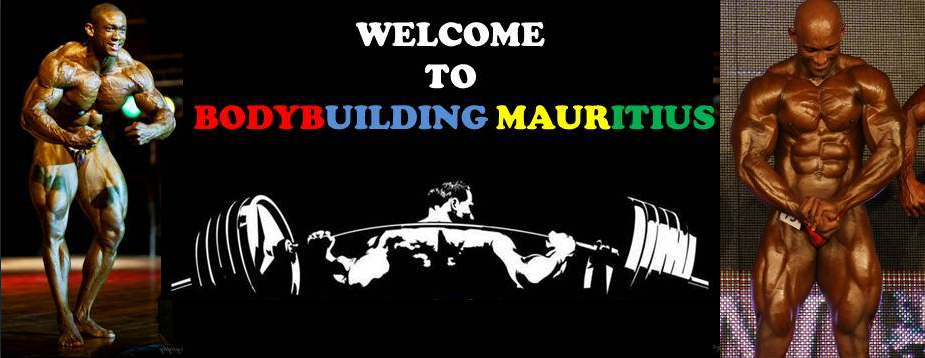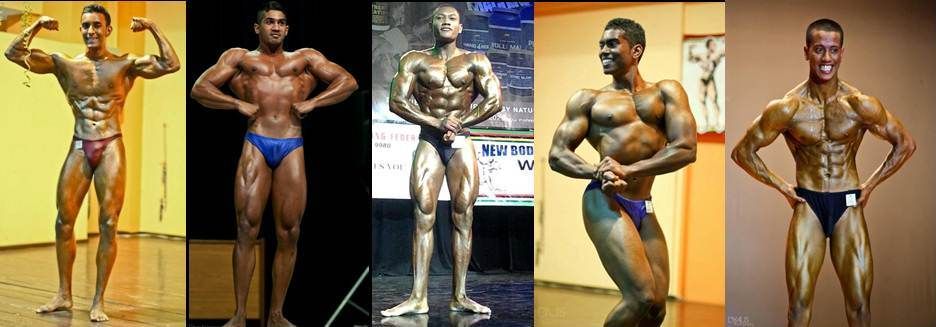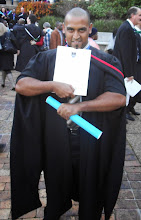Qualifications in Exercise and Nutrition for Mauritians
Researched and composed by Vic Goyaram
Fitness qualifications
I decided to write this article after having received several queries from friends in Mauritius about fitness qualifications that they can obtain. To my knowledge there isn't any institution offering courses yet in Mauritius. I am sure there will be in the future given the growing interest in fitness education and the number of qualified and experienced people. We need more qualified professionals in Mauritius because we need to reach out to the maximum people, not only those in bodybuilding.
I am putting together whatever I know about courses and qualifications in this article. It has been many years that I haven't been in Mauritius and if there has been any change, please feel free to add your own input. Although I am writing this article from a Mauritian perspective, many readers from other countries may also benefit. Rest assured that there is something for everyone, irrespective of educational background.
I am putting together whatever I know about courses and qualifications in this article. It has been many years that I haven't been in Mauritius and if there has been any change, please feel free to add your own input. Although I am writing this article from a Mauritian perspective, many readers from other countries may also benefit. Rest assured that there is something for everyone, irrespective of educational background.
How can qualifications help you?
First of all, let it be clear that having qualifications does not qualify you automatically to be an expert. We have all known people who can be classified as follows:
- People who flaunt their qualifications but whose level of knowledge is rather low. There are lots of personal trainers who don't even look like they are into any form of exercise, let alone lift.
- People who do not have any qualification but whose genuine interest for learning and long experience in the field really shows in how much they know in the field.
- People who have no interest in the fitness world but who view fitness-related jobs as a way to make quick money and one good day decide to pursue a personal training course. A couple of weeks down the line you will see them teach the wrong things in gyms.
I have personally learned a lot from people whose qualifications I didn't care to look up. From their knowledge it is evident that they know a lot from experience, continuing study and open-mindedness to consider new ideas. Knowledge is constantly accumulating, more new things are becoming known and a lot of old ideas and beliefs are being disproved. Therefore, we must be flexible enough.
Qualifications can help you in the following ways:
- If you want to become a personal trainer, advisor, PE teacher or have a gym and want to give better coaching to others.
- If you are an athlete and want to increase your knowledge on sports training and nutrition that can give you an edge.
BUT NEVER FORGET THAT learning never stops. Even if you have a PhD in Exercise/ Nutrition Sciences there is still room to learn. You can even learn from someone who has no qualifications. Remain humble even in a situation when others are wrong and you may be right. There are so many new research findings in the fields of exercise and nutrition that there is so much more to learn. Don't give your qualifications a bad name.
Routes to qualifications
Routes to qualifications
1. The academic-formal education route
There are two ways to go about with this one. The first way is as follows:
Specialised degrees
Doing an undergraduate degree in the field of Biology, Biochemistry, Nutrition, Physiology and allied disciplines. After this degree you can either go into other professions (industry, teaching etc) but this qualifies you to a number of certifications that you can pursue which require that you have a degree in the above disciplines. I will tell you more about these later.
Courses at the University of Mauritius
The University of Mauritius offers good quality undergraduate courses in disciplines that prepare you for sports/ exercise related fields. Undergraduate education at the University of Mauritius is very good. Don't let anyone tell you that their degree is not good. The one who discourages you from studying a field you are passionate about deserves a slap.
There may be shortcomings at the postgraduate level in certain fields but undergraduate education at UoM is very good. A lot of UoM graduates remain unemployed in Mauritius but once they decide to let go of mommy and daddy's house and stand on their own feet abroad they will see the edge their UoM degree gives them. Even if foreign universities may require you to do equivalence exams you will be better than most students abroad. The following are the qualifications from the University of Mauritius that I have short-listed.
1. The Diploma in Sports Science & Recreational Activities. click for details
2. The BSc (Hons) Physiotherapy: Physiotherapists are key people in sports. Respect to physiotherapists. They are also trained to help children and elderly as their training is not sports-specific. I have a friend who is the physiotherapist for the South African Canoeing national team. She is very good and has a gratifying career. More details on the UoM BSc (Hons) Physiotherapy course click here.
3. The BSc (Hons) Biology: This is the degree that I did with UoM 12 years ago. It is an excellent degree with the curriculum encompassing all aspects of living systems and the environment. With respect to our field you will be adequately trained in biochemistry, cellular biology, physiology as well as plants of pharmaceutical importance. With this degree in your pocket you will be equipped to go into any field dealing with living things. For my final year I did my research project on human nutrition (mineral bio-availability). I was also able to do mini-research projects on plant antioxidant biochemistry. Personally speaking, this qualification helped me obtain employment in the field of Agriculture, horticulture, plant pathology and medical diagnostics before I undertook exercise biology as my future career course. Every single thing that I have learned from my degree has helped me subsequently. Click here for more details.
4. Specialised Physiology/ Biochemistry/ Nutrition/ Food Science degrees: If you decide to be a specialist from undergraduate level itself then you need to fly abroad to study. There are many options in the UK, the Americas, Australia and other European countries but not everybody has the money to go to such countries. An excellent foreign study option remains India. There are many good universities in India that you can afford with more or less the same amount of money you'd spend for a degree in Mauritius. There are also South African universities that rank among the world's finest but the downside is that they are quite expensive, although not as expensive as Europe/ US/ Canada/ Australia. An undergraduate degree may cost about Rs. 1.5 million. I recommend the following universities in South Africa:
Some can take it further and go on higher degrees. The job prospects are numerous provided one is versatile. University Lecturer/ researcher in exercise science, formulations R&D scientists for supplement companies, scientific writer for magazines, scientific coaches. It takes so much time and massive efforts that sometimes it pains and you have to be really passionate about it or else don’t do it. It is really tough. You may need to spend 10 years at a university to reach this level and spend a boatload of money and undergo sacrifice. This is especially true if you choose to be independent or do not come from a family who has money. Ask me about it.
For people having degrees in other fields
If you are pursuing a degree in other fields (commerce, accounting, engineering etc) and are interested in getting a training/nutrition certification then it is possible as there are many reliable ones that you can acquire that do not require a specialised degree. You will learn more about these below.
2. Online Accreditations
You have to be very careful with online course providers. There are many scam artists on the Internet offering one-day fitness certifications. In my opinion, one of the best online course provider is the International Sports Science Organisation (ISSA). It is based in the USA among it's panellists are Dr. Sal Arria, Dr. Fred Hatfield, Dr. Thomas D. Fahey, Dr. John Berardi, Dr. William J. Kraemer as well as highly knowledgeable bodybuilding legends like Bill Pearl and John DeFendis. I have helped friends obtain their ISSA qualifications, especially their nutrition certification.
The ISSA offer training and nutrition certifications and it is not difficult to pass exams provided you put the effort in. With an SC certificate these courses can be done from Mauritius itself. For more information:
.jpg) |
| Click here to visit the ISSA website |
2. Professional Certifications
a. The International Society of Sports Nutrition (ISSN)
 |
| Click here to visit the ISSN website |
The ISSN offers two main sports nutrition certifications, namely the:
- The Sports Nutrition Specialist (SNS): If you have an HSC and are above 18 you can do the SNS. You require a knowledge of basic exercise training, general nutrition and sports supplements. If you are in Mauritius you will need to get a Biology/ Health professor at a university invigilate you while you write the exams at a pre-determined time. The SNS is definitely worth the investment. For more details about the SNS click here. (Yo! I didn't mean "lick" but click)
- The Certified Sports Nutritionist (CISSN): If you have a master’s degree or a 4-yr undergraduate degree in the related disciplines you can do this. If you have a degree in an unrelated field there are some conditions that should be met. You must get a professor to invigilate you for the exams or you can take the exams in America at the ISSN conference (expenive). For more details on the CISSN credential and how to obtain it please click here to find out more.
b. National Strength and Conditioning Association (NSCA)
 |
| Click here to visit the NSCA website |
When it comes to training certifications honestly I don't know better than the US-based NSCA which has been founded in 1978. The NSCA bridges the gap between science and its application and its certifications are the most sought-after in the industry. NSCA certifications are also recognised worldwide. The famous Journal of Strength and Conditioning research (JSCR) is the published by the NSCA.
Below are the major certification courses offered by the NSCA:
To become an NSCA-CPT you will need HSC plus some experience in training. You will have to take an intensive exam at an examination centre. The closest for Mauritius is South Africa. The NSCA qualifies CPT specialists as follows:
"Health/fitness professionals who, using an individualized approach, assess, motivate, educate and train clients regarding their health and fitness needs. They design safe and effective exercise programs, provide the guidance to help clients achieve their personal health/fitness goals and respond appropriately in emergency situations. Recognizing their own area of expertise, personal trainers refer clients to other health care professionals when appropriate". More details here.
The NSCA-CSCS (Certified Strength and Conditioning Specialist)
This uses a more scientific approach to training and coaching. It requires a post-secondary qualification. Exams are held abroad. South Africa is the option for Mauritians. A lot of professionals have it. The NSCA qualifies CSCS specialists as follows:
"Professionals who apply scientific knowledge to train athletes for the primary goal of improving athletic performance. They conduct sport-specific testing sessions, design and implement safe and effective strength training and conditioning programs and provide guidance regarding nutrition and injury prevention. Recognizing that their area of expertise is separate and distinct, CSCSs consult with and refer athletes to other professionals when appropriate". More about the CSCS certification". More details here.
The NSCA-CSPS (Certified Special Populations Specialist)
People with special needs like those with disabilities or medical conditions can also benefit from exercise. Special populations specialists are well equipped to attend to these people. The NSCA qualifies CSPS specialists as follows:
"fitness professionals who, using an individualized approach, assess, motivate, educate, and train special population clients of all ages regarding their health and fitness needs, preventively, and in collaboration with healthcare professionals. Special populations include those with chronic and temporary health conditions. CSPSs design safe and effective exercise programs, provide the guidance to help clients achieve their personal health/fitness goals, and recognize and respond to emergency situations. Recognizing their own areas of expertise, CSPSs receive referrals from and refer clients to other healthcare providers as appropriate". More details here.
Feel free to write to me if you need any guidance about the fields of study to choose. Also chat with others who are experienced in this field. My email address is vicgoyaram@gmail.com. It takes a lot of sacrifice to get these qualifications but at the end of the day it is worth it. There is no easy way out. You have to sacrifice to gain.
























.jpg)


.jpg)



























